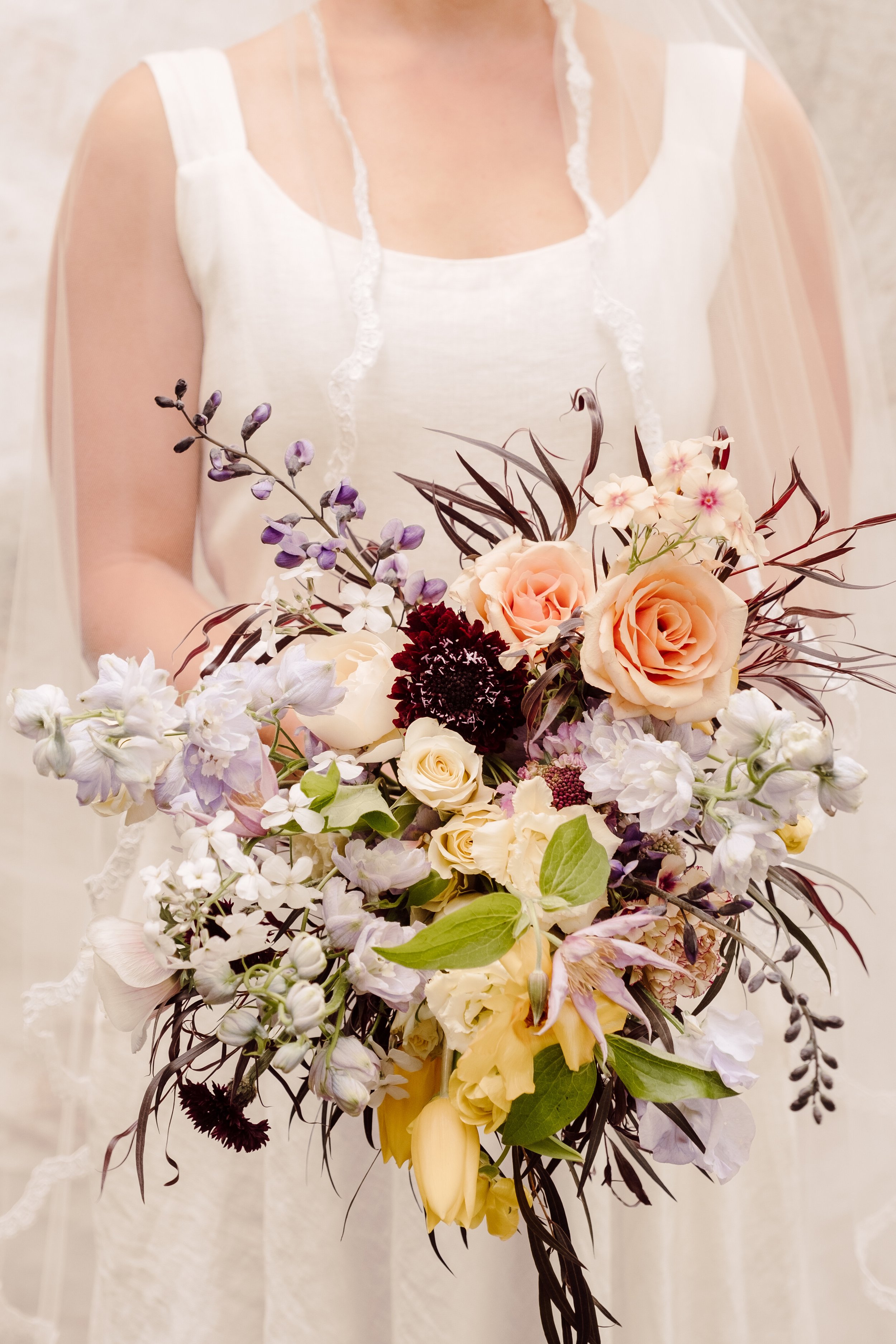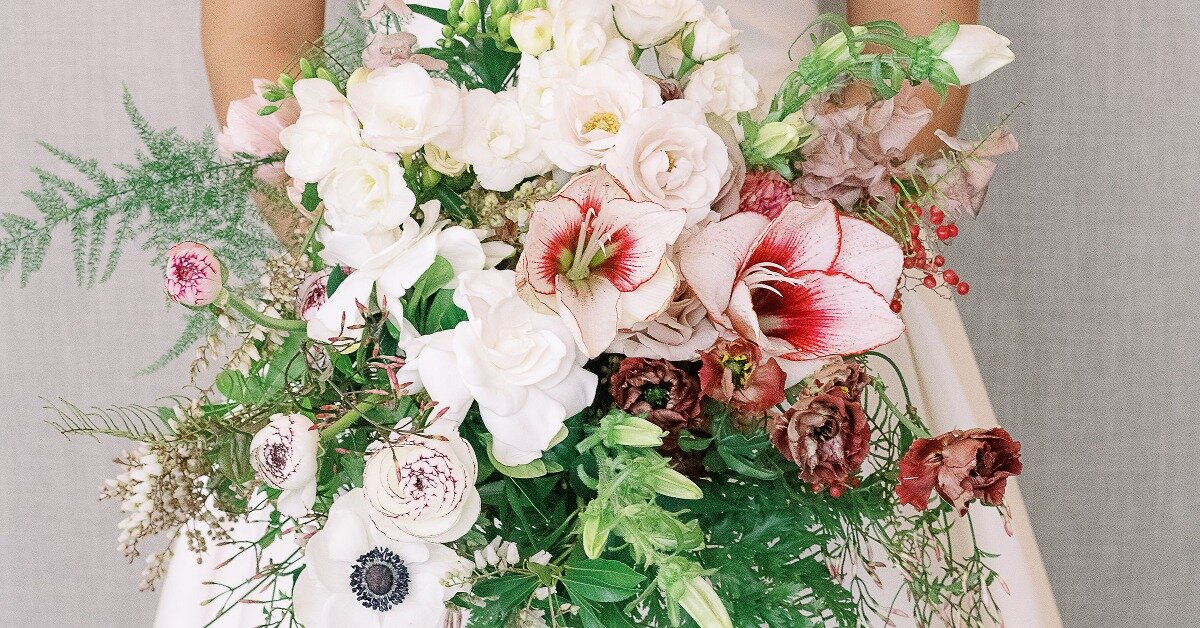Seasonal Design Highlight: Opposites Attract in a Complimentary Color Palette
In this Team Flower Seasonal Design Highlight, we're featuring a bouquet design by The Floral Coach, a wedding and event florist turned educator who offers online educational classes and one-on-one workshops. The Floral Coach can be found online at www.thefloralcoach.com or on social media @thefloralcoach_.
Color is beautiful and can be used in so many ways! If you’ve never studied color theory, I encourage you to look into it.
You can create floral arrangements that are monochromatic (just one color), analogous (colors next to one another on the color wheel), complementary (colors across from one another on the color wheel), or even with all colors!
Complementary colors are those that are across from one another on the color wheel—like yellow and purple.
In the Bouquet Bootcamp of Spring 2021, I demonstrated how to design a complementary color palette using shades of yellows and violets to create an interesting palette with contrast.
Choosing varying tints, tones, and shades of two opposing hues allows for more gradual transitions between colors.
When designing this bouquet style, it's best to begin with large mass/round-shaped flowers and build out in a triangular shape.
Arranging in this way will allow you to emphasize line flowers and smaller round flowers toward the outside of the bouquet to create the shape.
When you choose a complementary color palette, you’re allowing for both colors to pop against one another—making your arrangement interesting and vibrant!
Pro Bouquet Tip: Consider using foliage that works with the color palette to strengthen the colors chosen and create more depth and interest.
Using intermediate shades (like the camel rose pictured here) helps carry the color scheme together.
Ingredients & Stem Counts
1 white anemone, black eyed beauty
1 lavender sweet pea
2 cherry caramel phlox
2 lavender hybrid delphinium
2 purple baptisia
2 black ball cornflower
2 blackberry scoop scabiosa
3 lavender scabiosa
2 limoncello spray roses
2 camel roses
2 bicolor carnation, white with burgundy tip
1 yellow bicolor carnations, yellow with burgundy tip
1 yellow lisianthus
1 Lichfield angel garden rose
2 lavender clematis
2 yellow butterfly ranunculus
2 cream ranunculus
4 stem agonis bunch
3 yellow tulips
2 purple/lavender/white phlox
Design from the inside out when using complementary colors.
When choosing your flowers, remember to include your foliage in your color scheme!
All photography by Karen Obrist Photography.











